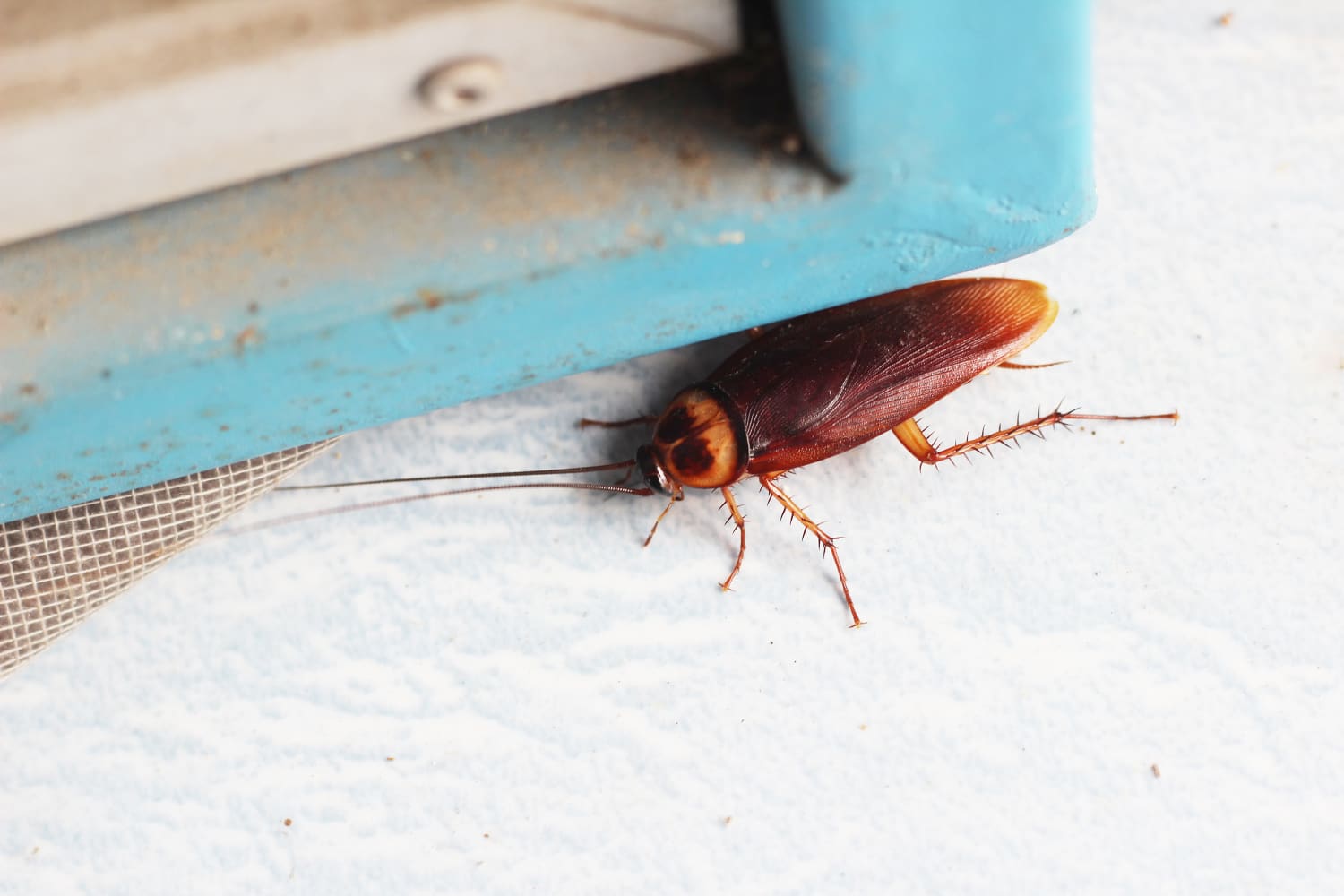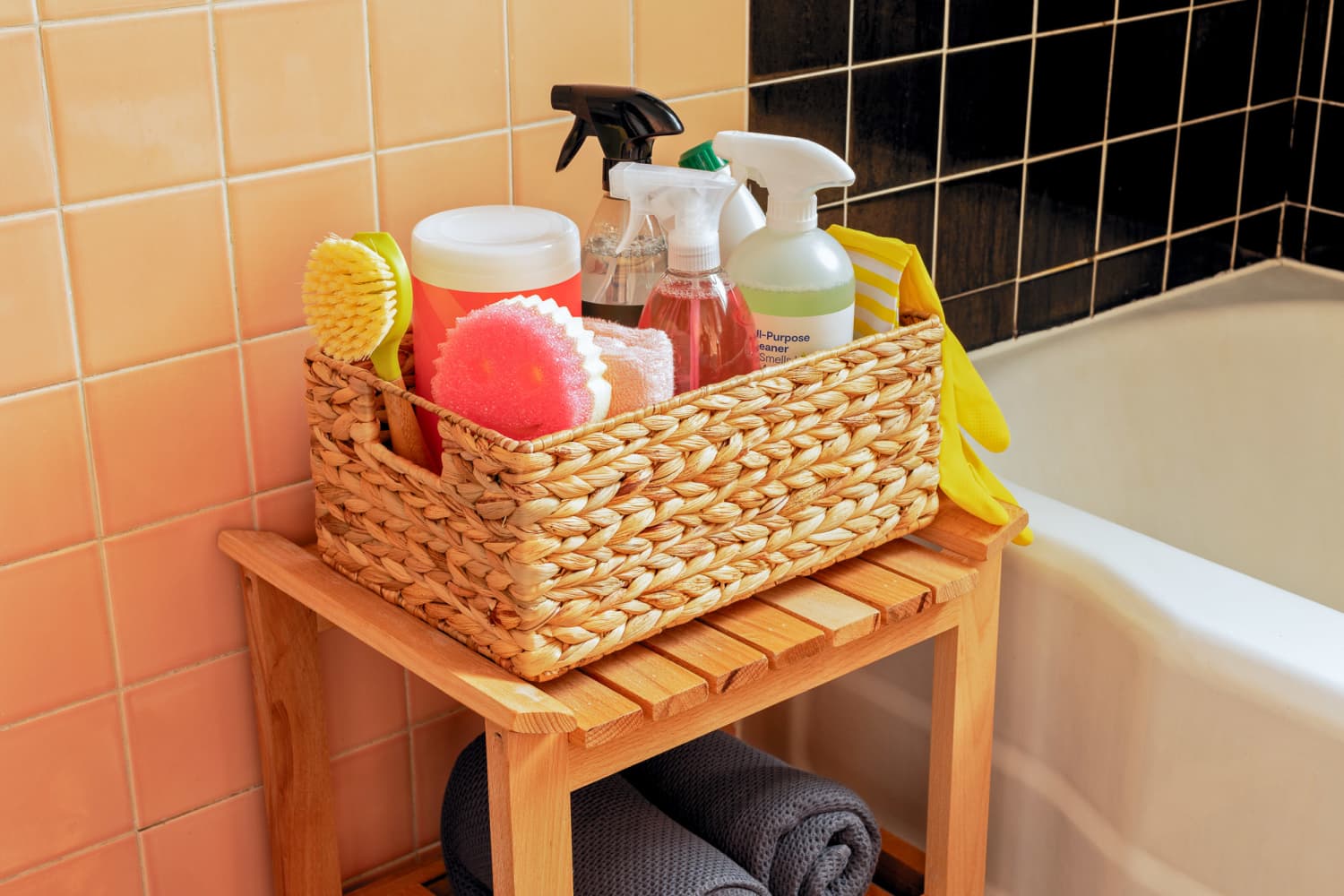We independently select these products—if you buy from one of our links, we may earn a commission. All prices were accurate at the time of publishing.
Odds are pretty good that you’ve heard of a cockroach before — and you’ve likely encountered one (or a few) of these gross pests at home in your lifetime, too. If not, you’re a lucky soul! Cockroaches, which are found literally all over the world, definitely have a built-in “ick” factor, thanks to their creepy-crawly appearance. That “ick” factor definitely isn’t helped by the fact that cockroaches are usually found in places that are dirty, damp, and cluttered, or that they’re often found in groups. Where you see one, there’s usually more — and if you can’t see those, it just means they’re hiding. Shudder.
Depending on where you live in the United States, you might also have heard someone mention palmetto bugs — which look suspiciously similar to cockroaches. So, what’s the difference between palmetto bugs and cockroaches?
When anything has two names, it can be beyond confusing. What exactly is a cockroach, and what in the world is a palmetto bug? And how can you tell if what you’re seeing is a palmetto bug or a cockroach? Here, expert entomologists (aka pros in all things bugs), explain palmetto bugs vs. cockroaches and offer advice on preventing both.
Cockroaches, also called “roaches,” are insects that usually have long oval-shaped bodies with long antennae. This is one difference between cockroaches and beetles, which usually have short antennae.
There are many different types of cockroaches all around the world, but they usually all have wings (although some are nonfunctional). They appear to have hard “shells,” but their bodies usually have a leathery or papery texture.
Cockroaches are extremely resourceful and resilient creatures and have the ability to survive in a wide variety of environments. They can go without food for weeks, but need water to survive. That’s why you’ll often find them in damp places like basements.
Some cockroaches thrive outdoors, but many prefer living indoors, in homes, businesses, and other enclosed spaces where they can find food, water, and shelter. The most common areas you’ll find cockroaches are kitchens and bathrooms.
A common cockroach you’ll find inside is the German cockroach, says Changlu Wang, Ph.D Extension Specialist in Entomology at Rutgers University, explains.
“Outside, cockroaches are often found in mulch, shrubs, tree cavities, and sewage pipes,” Wang adds.
Cockroaches are most active at night, but if you have an infestation you might find droppings (which look a bit like pepper) and smell a musty odor.
Cockroaches can spread disease-causing bacteria, and their saliva, droppings, and shed skin can irritate allergies and asthma.
The palmetto bug is a term most commonly used in the Southeastern United States.
“The Palmetto bug is a term used to refer to certain types of large cockroaches that primarily live outdoors and are often found in Palmetto palm trees in regions where these plants are common,” Scott Svenheim from Truly Nolen Pest Control explains.
Yes, palmetto bugs are cockroaches.
Bad news: Palmetto bugs are just cockroaches with a fancier name.
When people use the term “palmetto bug,” they’re usually referring to American or smoky brown cockroaches, Svenheim says.
There are other regional names for cockroaches, too. “In the Southwest, Palmetto bugs are commonly referred to as American roaches or sewer roaches and often reside on the exterior of a home in warm, damp areas like irrigation boxes or under large debris,” says Joel Maynerich of Moxie Pest Control.
No matter where you are in the United States, when the temperatures get really high, cockroaches, palmetto bugs, or sewer roaches might wander into your home.
And yes, palmetto bugs can fly.
Like other cockroaches, palmetto bugs can fly. But Svenheim assures us that while palmetto bugs have wings and the ability to fly, they usually choose not to (or will only fly short distances).
There are a few types of cockroaches that might be called “palmetto bugs.”
Besides the American cockroach, there are some other larger cockroaches that are referred to as palmetto bugs. These are the cockroaches that might be called “palmetto bugs.”
American cockroaches are the largest of roaches known for infesting houses. People might also refer to them as water bugs. They are typically a red-brown color with yellow on their oval shaped body.
American cockroaches have six legs, long antennae, and a figure-eight pattern on the back of their heads.
American cockroaches can be found worldwide, and they can fly short distances.
American cockroaches primarily live outdoors, but it’s not uncommon to find them in a house or building. They live in sewers and drains and thrive in more humid and shady areas — so don’t be surprised if you see one in dirt, mulch, and flower beds.
American cockroaches are omnivores, meaning they will eat plants and animals. “They are not picky eaters and will eat trash, manure, sugars, and meat,” Maynerich explains. When things are really scarce they will even cannibalize and eat the weak cockroaches around them to survive and help to reduce population size.
Smoky brown cockroaches are commonly found in the southeastern part of the U.S. and often in large cities. You’ll usually find these cockroaches outside, but they do breed in attics, allowing them to grow unnoticed.
Smoky brown cockroaches are larger cockroaches that also live in warmer and high-humidity weather. They prefer to live in moist areas that are a little more protected from natural elements such as rain and colder weather. This is because they are prone to becoming dehydrated and they literally need to live in this type of environment to survive. You can find smoky brown cockroaches in wooded areas in trees or even under mulch.
Smoky brown cockroaches prefer to be more active at night or very early in the morning, which is when they search for food and water. Their diet is pretty on par with other cockroaches: dead insects, meat, starches, and sweets.
The Florida woods cockroach can be found in structures near your home, like garages, water pumps, storage areas, and anywhere plants, mulch, and dirt can be found, like in a greenhouse.
Unfortunately, Florida woods cockroaches can sometimes make their way into your home by hitching a ride on something you’re bringing inside, like a plant, firewood, or a cardboard box.
Florida woods cockroaches have bodies that are dark red and appear almost black in color. Their wings are too short to make them effective fliers.
Unlike the other cockroaches that are considered palmetto bugs, the Florida woods cockroach doesn’t have any interest in consuming waste or debris. This is why you’ll notice them more outside than inside. They prefer to eat dead or dying plants and leaves and bark. Florida woods cockroaches are known to also eat molds and mosses, and you’ll find them in trees, decaying logs, under leaves, and in compost.
The Australian cockroach appears to have more color than other cockroaches. They’re reddish brown with yellow markings on their wings.
Australian cockroaches need warmth to survive and will move inside when the weather becomes colder. Just like the other cockroaches, Australian cockroaches prefer to live somewhere with high humidity and can be found in trees and in piles of wood and leaves.
The Australian cockroach prefers to stay outside near wooded areas and gardens. But, they’re not shy enough to stay away from venturing into buildings in search of food or water. If you do see Australian cockroaches inside a store, business, or your home, you’ll find them close to food and water (meaning your bathtubs, drains, sinks, and in your kitchen).
Australian cockroaches prefer to eat plants, but will eat anything they can find, including garbage and feces.
Preventing Cockroaches and Palmetto Bugs at Home
The best way to prevent cockroaches and palmetto bugs at home is to keep your home clean and free of food debris. Because these bugs like moisture, it’s important to make sure you don’t have any water leaks at home, too.
Remove cardboard and any other clutter, which can provide an easy hiding spot for cockroaches and palmetto bugs.
You should also seal any cracks and gaps around windows and doors, which provide a way for cockroaches and palmetto bugs to enter your home. (Here’s a guide for how to add weatherstripping to your doors for reference.)
While you can buy DIY-friendly cockroach poison — or even natural roach repellants — it’s best to call a pro to handle infestations.
#Palmetto #Bug #Cockroach #Whats #Difference







